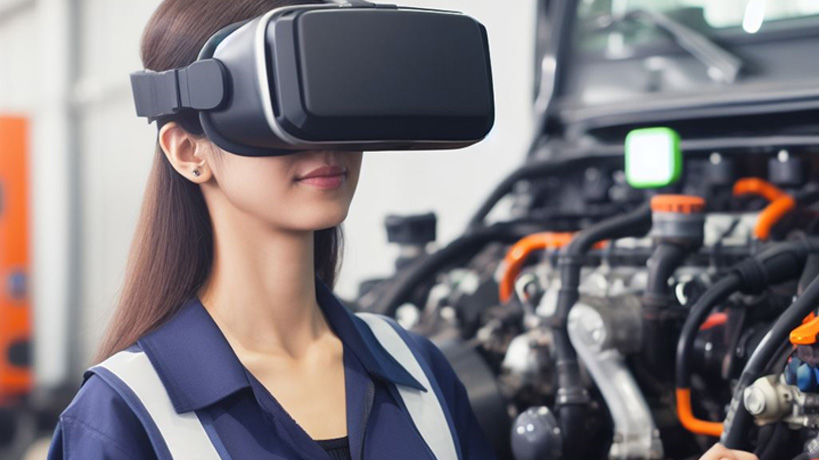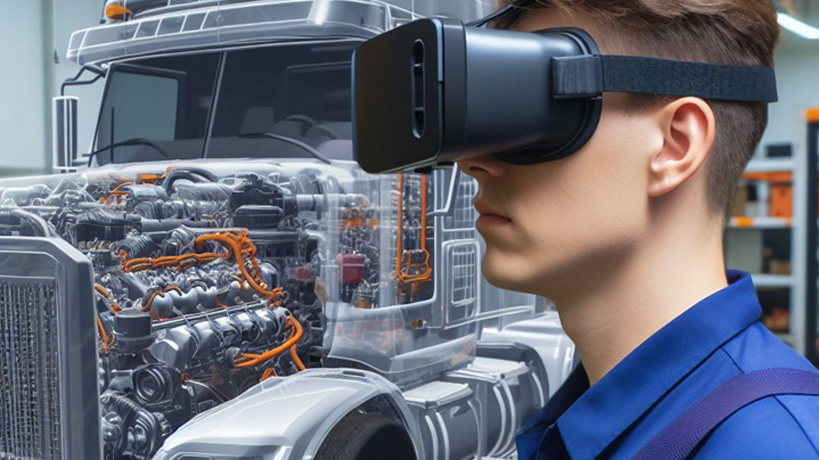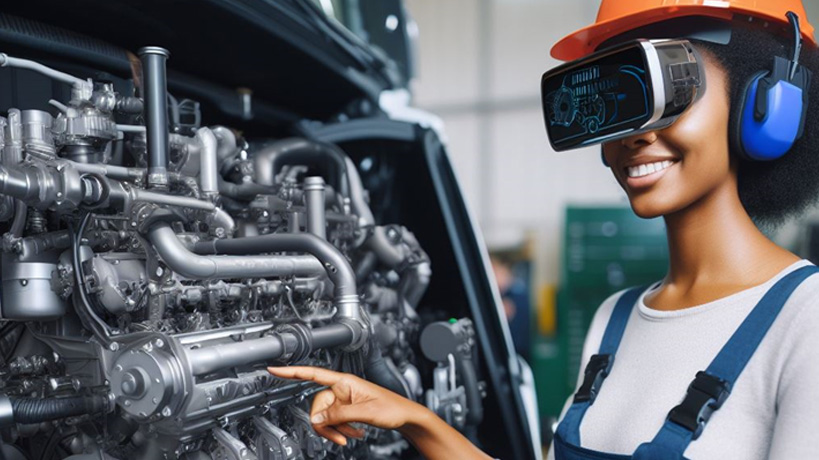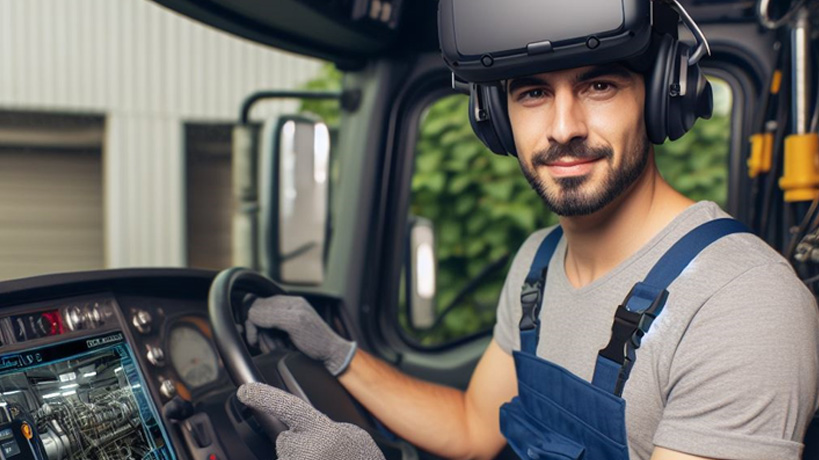
Image Courtesy: Bing Image Creator Microsoft Designer
The trucking industry is undergoing a substantial technological change driven by augmented reality (AR) advances. Therefore, AR transforms how mechanics and technicians diagnose, repair, and maintain trucks, providing them with real-time insights into the inner workings of complex diesel, gasoline, and electrical engines.

Image Courtesy: Bing Image Creator Microsoft Designer
Enhanced Diagnostics and Repairs
AR technology lets mechanics visualize engine components and systems in real time, providing a detailed understanding of their operation and potential issues. As a result, this real-time visualization eliminates the need for time-consuming physical examinations, allowing quicker and more accurate diagnostics. Augmented Reality (AR) transforms education.
With AR, mechanics can overlay digital information onto the physical engine, highlighting specific components and displaying real-time data such as temperature, pressure, and sensor readings.
This level of detail allows for precise identification of faults and facilitates more efficient troubleshooting.

Image Courtesy: Bing Image Creator Microsoft Designer
Interactive Repair Guidance
AR is not only enhancing diagnostics but also transforming repair procedures. As a result, mechanics can now receive step-by-step guidance superimposed onto the engine, clearly understanding the repair process and reducing the risk of errors.
AR-powered repair manuals can provide detailed instructions, including animations, 3D models, and voice prompts, guiding mechanics through complex procedures. Thus this interactive guidance ensures that repairs are performed correctly and efficiently, minimizing downtime and maximizing vehicle uptime.

Image Courtesy: Bing Image Creator Microsoft Designer
Training and Education
AR is also revolutionizing training and education for truck mechanics and technicians. As a result, AR-based training modules allow trainees to explore and interact with virtual engine models, providing a hands-on learning experience without needing physical engines.
Trainees can visualize engine components, manipulate them virtually, and observe their interactions, gaining a deeper understanding of engine operation and maintenance procedures.
This immersive learning approach enhances comprehension and retention, preparing trainees for real-world scenarios.
Benefits of AR for Engine Visualization
The adoption of AR for engine visualization in the trucking industry offers numerous benefits:
Improved Diagnostics: Real-time visualization facilitates quicker and more accurate identification
of engine faults.
Enhanced Repair Efficiency: AR-guided repairs minimize downtime and maximize vehicle uptime.
Practical Training: AR-based training modules provide an immersive learning experience, improving comprehension and retention.
Reduced Paperwork: AR eliminates the need for physical manuals and documentation, simplifying repair procedures.
Increased Safety: AR guides mechanics away from hazardous areas, reducing the risk of accidents.
Conclusion
AR is revolutionizing the trucking industry by providing mechanics and technicians with real-time insights into the inner workings of diesel, gasoline, and electrical engines. This technology enhances diagnostics, improves repair efficiency, and revolutionizes training, leading to increased productivity, reduced downtime, and a safer work environment for truck mechanics and technicians. As AR technology advances, its impact on the trucking industry is expected to grow even further, transforming how trucks are maintained and repaired, ultimately improving efficiency, safety, and sustainability across the industry.
